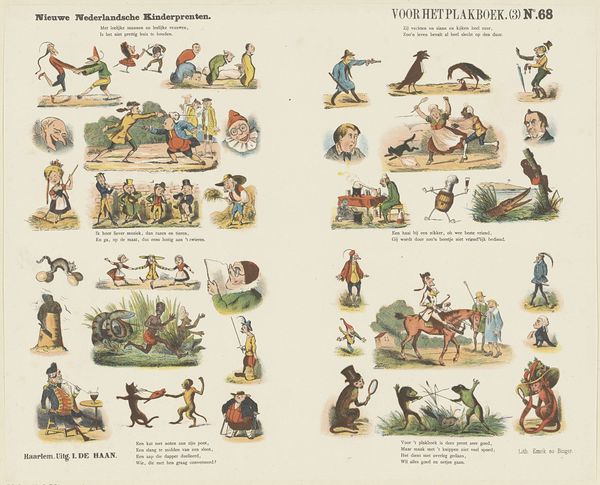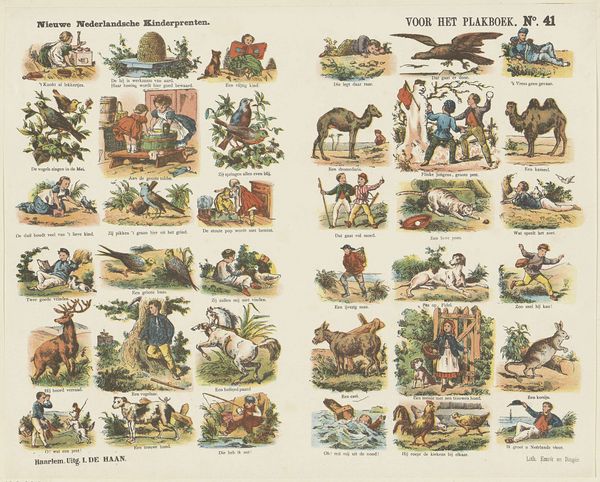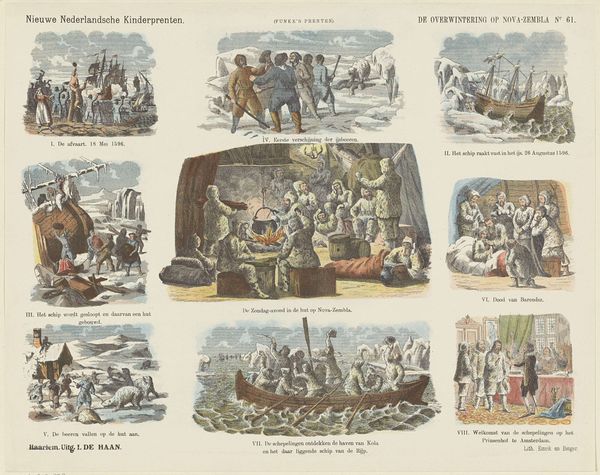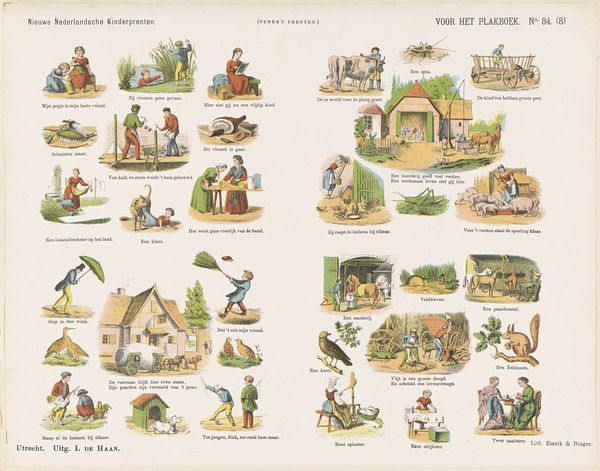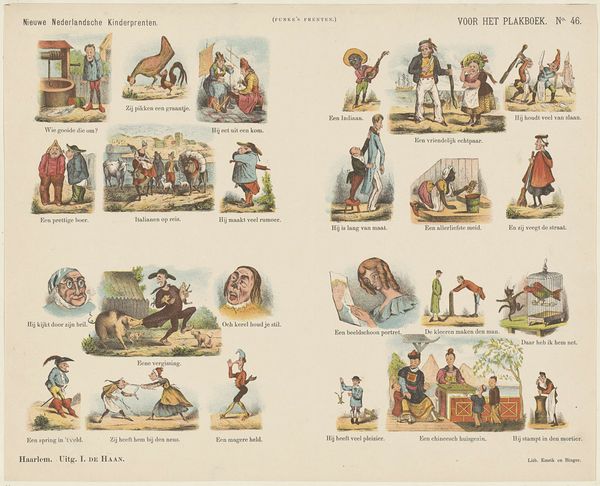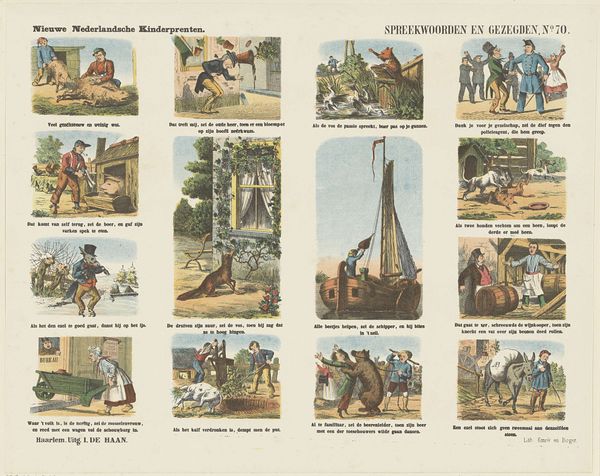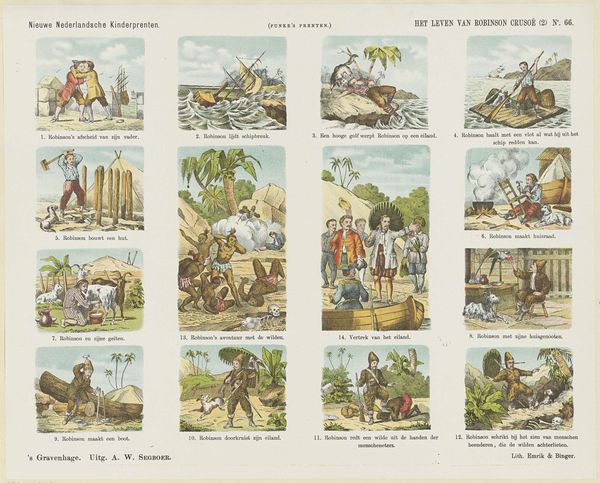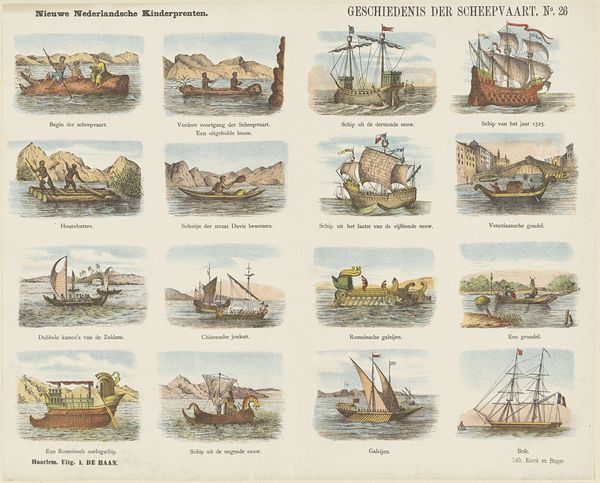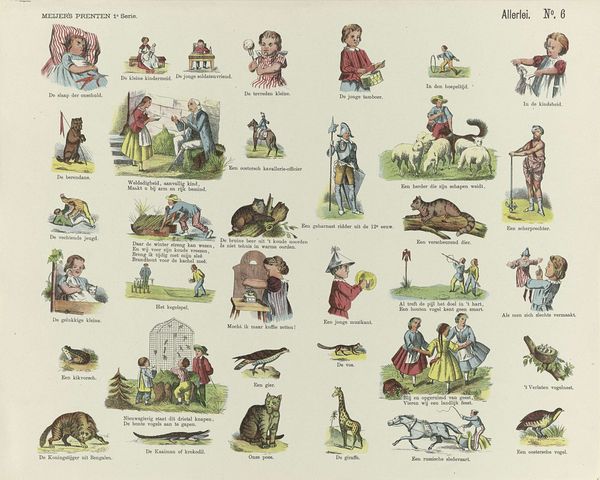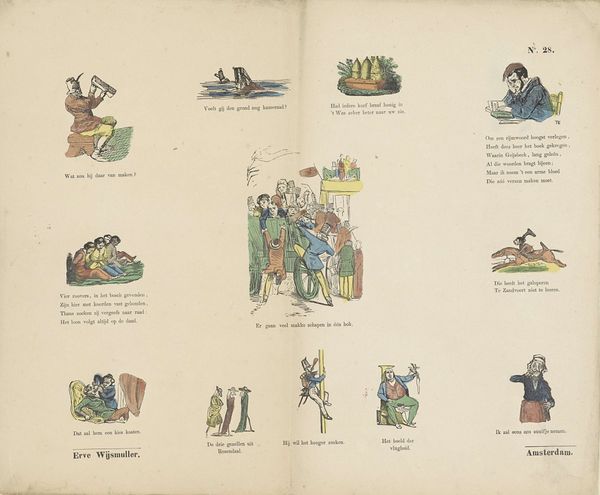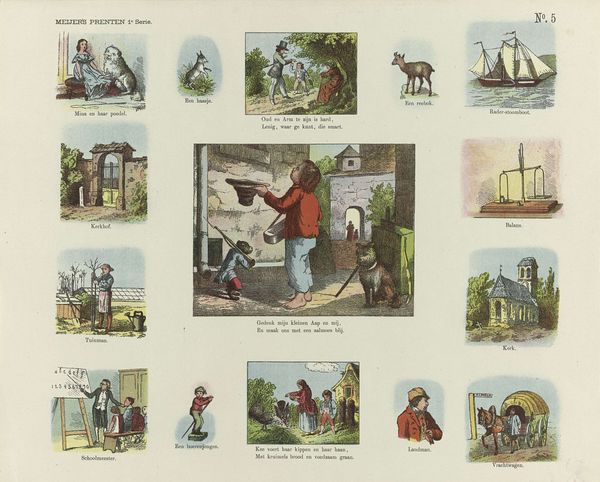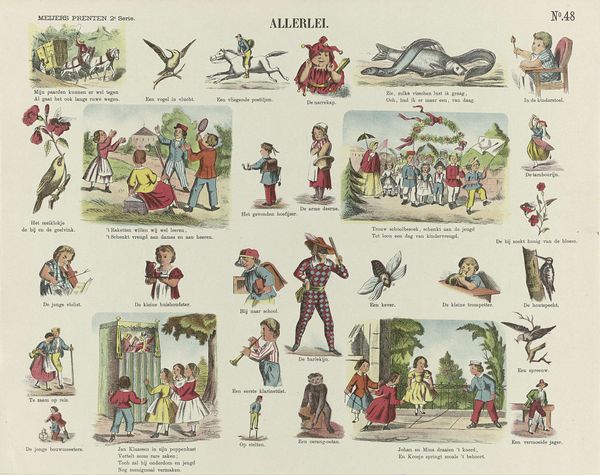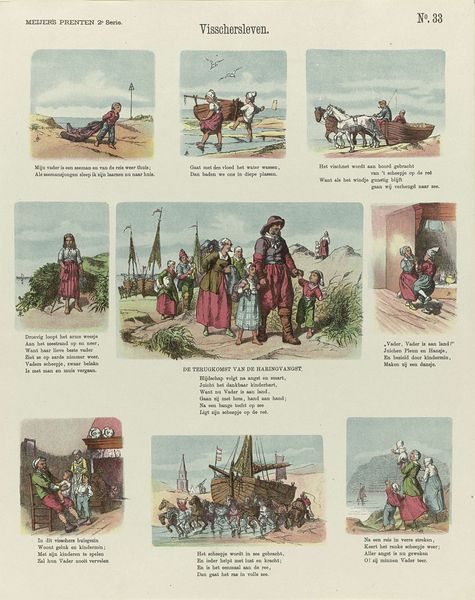
graphic-art, print
#
graphic-art
#
comic strip sketch
#
narrative-art
#
comic strip
# print
#
folk-art
#
genre-painting
Dimensions: height 338 mm, width 420 mm
Copyright: Rijks Museum: Open Domain
Editor: This print, “Voor het plakboek (4)” by Jan de Haan, made between 1875 and 1903, feels like a page out of a children’s book, full of tiny vignettes. What cultural narratives are being conveyed through these images? Curator: It's a fascinating question. I see a series of small scenes, each acting as a microcosm of Dutch life or perhaps even a gentle lesson. The recurring presence of animals and children immediately points to innocence and learning. Look at the scene with the children fishing. Editor: Yes, they appear to be at leisure in the country. Curator: Exactly! Fishing can signify patience, connection with nature, even spiritual reflection, depending on its context. Similarly, the image of a child riding an elephant evokes trade with the Dutch East Indies, hinting at wealth and colonial power. Notice how those seemingly innocuous details carry significant weight, shaping how we remember that period. What emotional tone is evoked? Editor: There's definitely a sense of idealized life and childhood in the Dutch countryside or perhaps the wealth to acquire things that come from far away, though possibly unaware of where or how that comes about. Curator: Precisely. De Haan has crafted a visual vocabulary which speaks of aspirations and moral teachings during that era. It reminds us that images weren't merely decorative, but also functioned as conveyors of social and cultural values. Considering that children most likely cut them and put them in a scrapbook, what do you think this meant to the child collecting these small paper prints? Editor: It becomes their memory book! They are curating their childhood and what it meant to be a child at this point in time, at least the elements they consider to be important. Curator: Indeed. Understanding how these images resonated with people in the past can really enrich our own present. Thank you for making the connections with cultural identity. Editor: Thank you for unpacking the symbolic language!
Comments
No comments
Be the first to comment and join the conversation on the ultimate creative platform.
